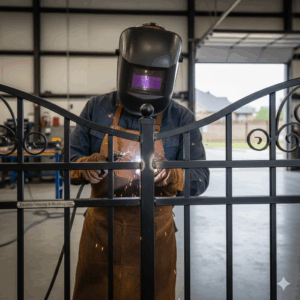Needle holder surgical instruments are critical tools in modern medicine, contributing significantly to the success of surgeries across various specialties. These instruments are specifically designed to hold needles securely during suturing and stitching processes, ensuring precision and safety for both patients and surgical staff. Their utilitarian design and functional importance make them indispensable in operating rooms, emergency departments, and other healthcare settings.
The Role of Needle Holders in Surgery
The primary role of a needle holder is to enable surgeons to control and manipulate needles effectively during procedures. They minimize the risk of slippage, which could lead to inaccurate suturing or injury to surrounding tissues. Precision is crucial in surgeries, especially in delicate procedures involving organs, veins, or arteries. Needle holders provide the stability and control necessary to perform these tasks without error. Designed with ergonomic features, these instruments reduce hand fatigue, even during long or complex surgeries. Their sturdy build ensures that they can withstand repeated use while maintaining their grip strength, a critical factor when working in high-pressure environments. From cardiovascular surgeries to minor wound closures, needle holders have found a place in all types of surgical procedures, highlighting their versatility and importance.
Characteristics and Design Features
Needle holders come in various sizes and designs to cater to different surgical needs. The choice of a specific type depends on the procedure being performed and the preferences of the surgical team. Typically made from stainless steel or other durable materials, these instruments are built to resist corrosion, maintain hygiene, and endure repeated sterilization cycles. The tips of needle holders are finely crafted to offer a firm grip without damaging the needle. Many designs incorporate tungsten carbide inserts on the diamond jaws, which enhance the instrument’s durability and provide superior holding power. Additionally, modern needle holders often include mechanisms such as ratchets or locking systems. These features allow the instrument to stay securely closed, leaving the surgeon free to focus on the precision of their movements without constantly readjusting their grip.
Popular Types of Needle Holders
There is a wide range of needle holders available, each designed with specific surgical needs in mind. Mayo-Hegar needle holders, for instance, are among the most commonly used in general surgeries, offering a balance of strength and control. On the other hand, Castroviejo needle holders are specifically designed for intricate microsurgeries, such as ophthalmological or vascular procedures, where delicacy and precision are paramount. For larger sutures or tasks requiring more force, heavy-duty needle holders are preferred, showcasing the adaptability of these instruments across various domains. Each type supports a surgeon’s ability to deliver precise outcomes, ensuring patient safety and efficient performance.
Maintenance and Sterilization
Proper maintenance and sterilization of needle holders are essential to ensure their longevity and effective performance. After every use, these instruments must be meticulously cleaned to remove any biological residues, such as blood or tissue. Many healthcare facilities use ultrasonic cleaning systems to reach tight spaces and ensure complete cleanliness. Sterilization typically involves high-pressure steam in autoclaves, a process that eliminates bacteria and prevents cross-contamination. Careful inspection after sterilization ensures that the locking mechanisms and gripping surfaces remain functional. Regular maintenance, including sharpening tungsten carbide inserts when needed, further extends the life and reliability of needle holders.
The Impact of Needle Holders on Surgical Outcomes
The reliability of needle holder surgical instruments translates directly into improved patient outcomes. Precision in suturing plays a significant role in proper wound healing, reducing the likelihood of complications such as infections or scarring. Surgeons are empowered to work confidently, achieving optimal results while minimizing risks. The evolution of needle holder designs reflects the healthcare industry’s continuous pursuit of innovation and excellence. Whether through advancements in materials or ergonomic improvements that enhance usability, every iteration contributes to better patient care and surgical efficiency.
Final Thoughts
Needle holder surgical instruments are far more than simple tools. They represent a blend of functionality, precision, and durability, underpinning the success of countless surgical procedures. Their indispensable role in modern medicine highlights the importance of ongoing innovation and careful maintenance. From complex microsurgeries to routine suturing, needle holders are an essential component of any surgical toolkit, providing the precision and safety required for optimal outcomes.









